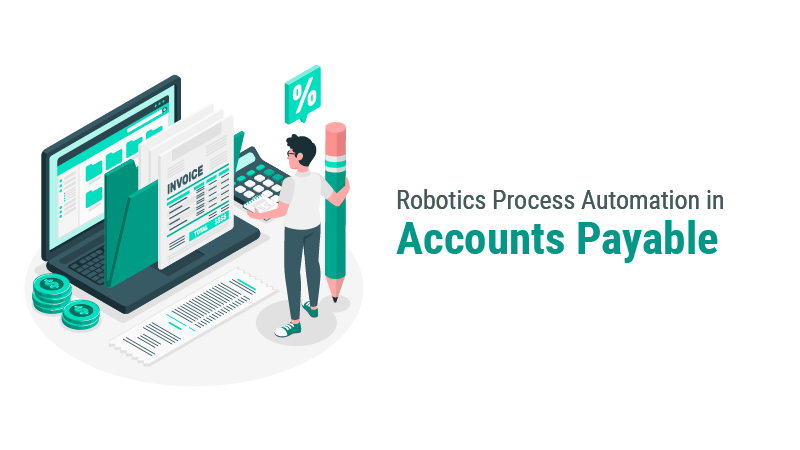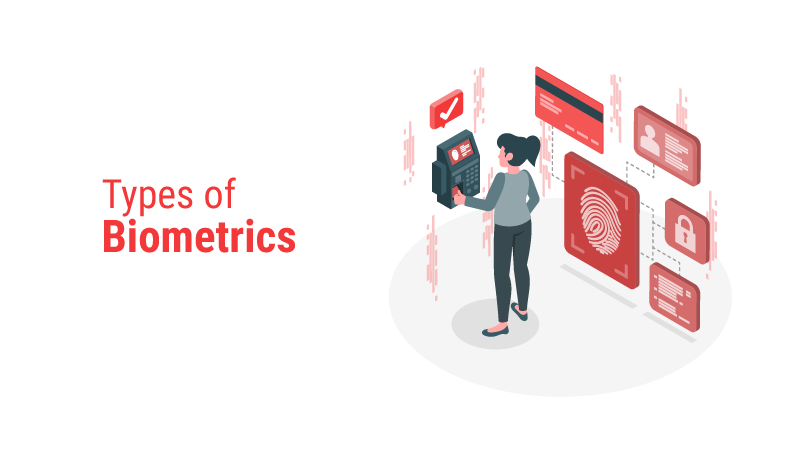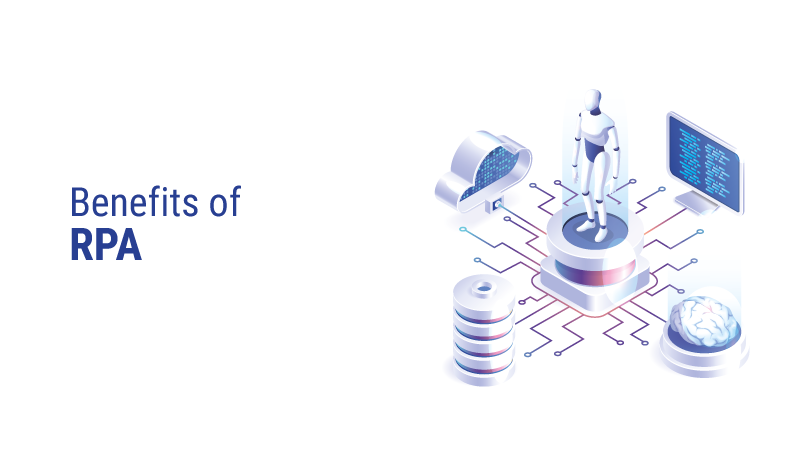Do you know which is the most challenging business area in the whole industry? It is none other than financial management and accounting, Accounts Payable specifically. The reason is that the majority of the accounting departments in various organizations depend on manual human resources and paper invoices to process payments. This is also the same reason why Accounts Payable (AP) is one of the most commonly targeted areas of robotic process automation (RPA) in the finance sector. AP demonstrates a perfect match on the basis of high volume, transactional, repetitive processes, and operations. This article describes how RPA has been implemented in organizations for accounts payable, the processes/ operations they aim to use in this technology (use cases), and the advantages of using RPA in AP.
RPA in accounts payable – Use Cases
RPA is employed in accounts payable for the following purposes;
Invoice approvals or matching
Invoices of accounts payable are received from various routes like e-mail, fax, or vendor website portal, which must either require the approval of the head of the finance department or have to be matched with the purchase order associated with it. It is incredibly strategic to maintain track of invoice or invoice status. This whole process needs innumerable email threads and paperwork. It also requires precision, consistency, and attention – using human resources in the process can lead to huge mistakes that cost a lot. With automated bots, the invoices can be directed automatically to the right person with reminders about the time limit for sending invoices. Likewise, organizations should also be given another priority to use algorithms to automate purchase order matching, equate invoices to their POs quickly, and flag inconsistencies for further review.
Payment execution
Once the payment is accepted, the invoice makes the online bank payment and reaches the person who processes it. Employees and staff who are dealing with this process must have clear visibility on all payment dates, including advance payment discount deadlines. It is a difficult task to keep track of these timelines, with the processing of multiple invoices on a weekly or monthly basis across various organizations. With automation of the payment execution process, authorized payments can be scheduled and sent by the due date automatically. Accounts Payable automation also enables enterprises with only one central place to select the payment option of their choice, simplify the payment process, and avoid the risk associated with every payment.
Better vendor management
Many huge and international companies work with hundreds of different providers, using multiple payment options, and various credit rules. By implementing RPA, you can ensure that every bill is paid and up to date. When two departments within a company are involved in transactions, automation of Accounts Payable solutions can be of great help. RPA makes sure that such transactions are precisely tracked so that payments are received from the right budget lines without minimizing or making overpayments to the vendor.
Fraud detection
Identifying any irregularity in data patterns can result in easier and faster detection of fraudulent activities through transparent invoice processing. Standardized workflows via robotic process automation distinguish irregularities clearly and make them noticeable. This helps to catch them and resolve them quickly.
RPA in accounts payable – Benefits
As we have discussed the use cases, here come the benefits of implementing RPA in Accounts Payable;
Better Compliance
Manual processing of accounts payable creates a lot of pressure on the employees who make the purchase order (PO), and they interrupt the overall process by not giving confirmation receipts for the goods and services accidentally. By getting help from robotic process automation service providers, organizations can create and send an automatic alert to the creator of purchase orders with the goal of maintaining any hold on the process if the PO is lost.
Error removal
Capturing data manually in the AP workflow is a tedious and laborious task that automatically leads to errors in the data provided on an accounts payable system. Robotic process automation can significantly enhance the process by capturing automated invoice data, thereby saving the costs of multiple errors. RPA systems are designed to be compatible with invoices at every level, so the invoice will be moved to the approval stage if the entire data is correct.
Scalability
A significant benefit of the Robotic Process Automation workflow is that it is highly and totally scalable as it has proved to be reusable across various industries, sectors, and locations. Whether it is a current state of growth or an add-on variation in the workload of accounts payable to be considered, RPA bots can be reassigned to busy queues quickly, depending on the individual circumstances of an organization.
Cost-saving
By implementing RPA software to undertake various invoice data entries and previously outsourced responsibilities, businesses can benefit significantly from RPA. In addition, organizations have been given the advantage of early payment discounts by suppliers, as a result of shortening the RPA standard invoice life cycle. Automation of such tasks will eliminate the need to pay late payment penalties, which are more likely to be manual actions.
Faster account reconciliation
Closing and Reconciling account books is a lengthy and difficult process as it includes input given by employees. Since software bots can be employed to handle small decisions, automate data transfer, and resolve inaccuracies, the use of RPA on accounts payable can make the process easier. This will minimize the risk of human error and make the accounting process faster and more precise.
Better customer satisfaction
Implementing RPA assures the availability of accounting services 365 days a year, regardless of the employee’s vacation or sick days. Automation of Accounts Payable enables organizations to provide better customer service and achieve a more competitive edge in the industry.
Wrap Up
Robotic Process Automation technology can be employed smoothly in existing systems and combined with the data available, which reduces the hassle of any organization’s current IT infrastructure. Implementation of RPA in the AP will minimize manual interference, increase the accuracy of data on key accounting systems, automatically evaluate clients, send invoices, and reduce human errors if you ensure that processes are evaluated appropriately.
Get Started with our RPA Services



